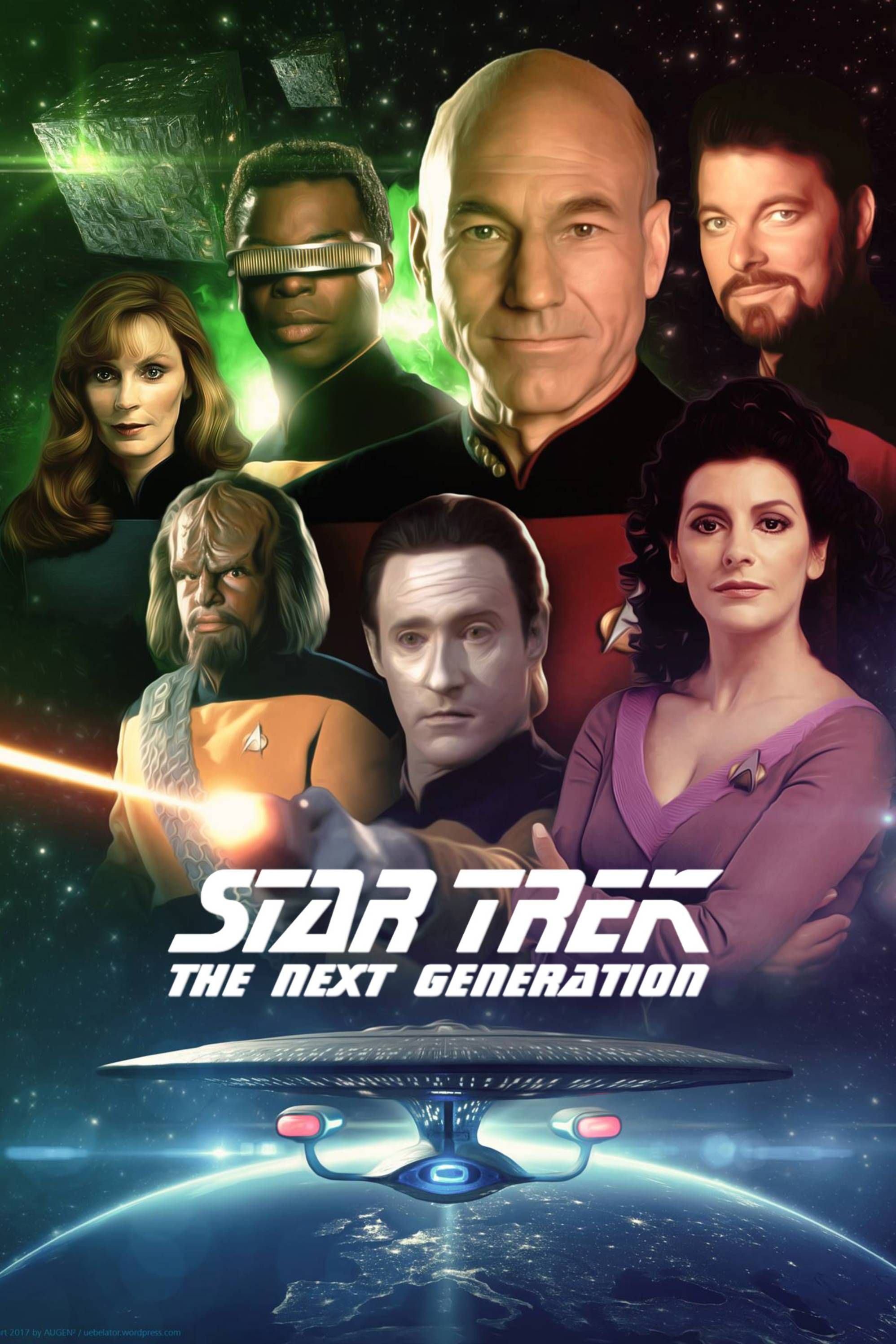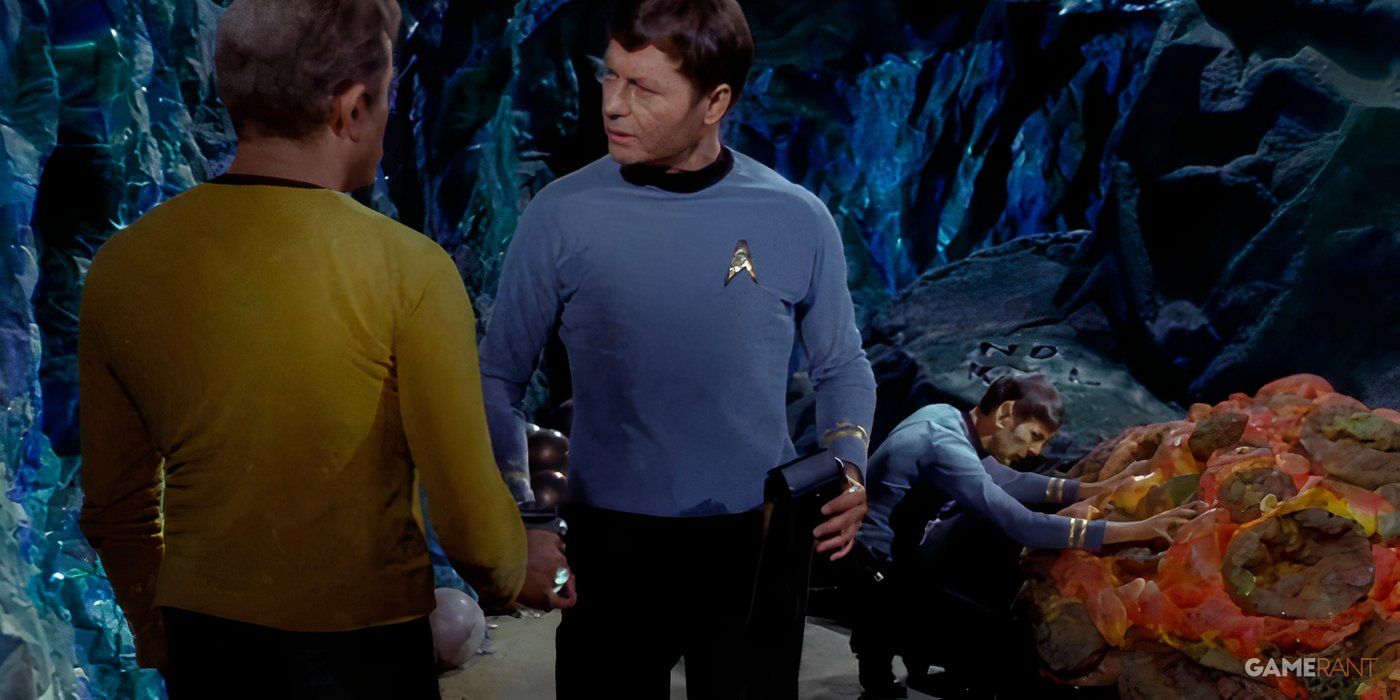In Star Trek lore, few symbols are as iconic as the Starfleet insignia—a delta-shaped emblem that has come to represent the spirit of exploration and unity in the United Federation of Planets. However, the delta’s initial appearance on screen has long been a topic of debate among fans.
For many decades, fans of Star Trek: The Original Series have believed that each starship possessed its own unique insignia, a theory seemingly supported by episodes that showcased different emblems. However, a mysterious 1967 production memo has surfaced, challenging this long-held belief and shedding light on the true intent behind Starfleet’s logo in The Original Series.

Related
Star Trek: Warp Catchphrases, Explained
Make it so!
The Origins of the Starfleet Insignia
The delta emblem, often referred to as the “Arrowhead,” was first conceptualized in 1964 by costume designer William Ware Theiss, with input from series creator Gene Roddenberry. The symbol was designed to adorn the uniforms of Starfleet officers and crew members and is believed to be inspired by old NASA logos and U.S. Airforce patches. Considering it has been around since the very beginning, the insignia has become virtually synonymous with the franchise at large.
Evidence of Multiple Early Insignias
While later installments in the franchise clarified the universal nature of the insignia across the Starfleet organization, many Star Trek fans have subscribed to the popular theory that in The Original Series, each starship within the fleet actually had its own distinctive insignia. This belief was reinforced by several episodes of The Original Series (which starred William Shatner and Leanard Nimoy), with the most notable example occurring in the season two episode “The Omega Glory.” In the episode, the crew of the U.S.S. Exeter, including Morgan Woodward’s Captain Tracy, was shown wearing an unfamiliar rectangular insignia rather than the one used by the Enterprise crew. This was not an isolated incident, as other episodes, such as “Court Martial,” depicted Starfleet officers with varying insignias, adding to the confusion.
This led fans to conclude that Starfleet in the 23rd century had not yet standardized a single emblem for all ships and that insignias were specific to each vessel. The introduction of characters like Commodore Matt Decker (William Windom) in “The Doomsday Machine,” wearing a different badge aboard the U.S.S. Constellation, only further confirmed this belief. Although never explicitly stated in the show, the theory persisted for years, becoming a widely accepted piece of Star Trek lore among longtime fans and franchise historians.
How a 1967 Production Memo Set the Record Straight
However, this popular theory about ship-specific insignia came crashing down with the discovery of producer Bob Justman’s 1967 memo. In the correspondence, which was meant for costume designer Theiss, Justman addressed the use of the unfamiliar insignia in the Exeter’s crew uniforms in “The Omega Glory,” emphasizing that all Starfleet personnel were intended to wear the familiar delta—which is referred to specifically as the “Starship emblem.” To the disbelief of many fans, the truth revealed that the variations seen in certain episodes were not, in fact, intentional design choices but rather accidental production oversights.
In an instant, the memo, which did not resurface until decades later, effectively nullified the assumption of ship-specific insignias. Additionally, the idea that the emblem’s evolution was intended as a symbol of the Starfleet’s eventual unification under the UFP was erased from the official lore.
TOS Production Challenges
While the insignia in TOS is a minor detail, it does underscore the difficulties faced during the show’s production. Known for its iconic sets and a few hilariously terrible episodes, the low-budget camp of The Original Series is what keeps some fans coming back to it today. Given that the series aired long before television was taken seriously as an art form, the presence of different insignias in TOS likely comes down to one of a few factors inherent to TV production during the 1960s:
- Costume Design Oversight: Costume designer Theiss likely took creative liberties with many of the show’s details, including the iconic uniform silhouettes that are still inspiring new installments. However, due to the way television was produced, it’s very likely neither Justman nor Ridberry were on set during the filming of this episode, and therefore, decisions were made without the intention of establishing ubiquitous insignia.
- Communication Gaps: The fast-paced nature of television production often led to miscommunications among the production team and general detail oversights, resulting in inconsistencies like the unintended use of unique insignias as well as many other continuity errors.
- Budgetary Constraints: Limited budgets mean less time on set and fewer hands on deck. Due to this being the show’s first run, its small budget may have led to the reuse of existing materials, costumes, or props. For example, Theiss may have had to make a last-minute decision to reuse an Enterprise uniform for an Exeter team member and make a quick insignia to differentiate the costumes.
Fan Reaction to the Revelation
When the production memo was brought to light and shared among Star Trek enthusiasts, reactions were mixed. Some longtime fans expressed disappointment, feeling that the idea of ship-specific insignias, which later evolved into one universal symbol, added a layer of depth and world-building. Others welcomed the new info, appreciating that the truth about Rodenberry’s intentions for the insignia was finally clear.
Online forums saw passionate debates over the surprising revelation. Some argued that later Star Trek projects had effectively canonized the idea of ship-specific insignias by incorporating unique emblems for certain vessels and divisions. Others viewed the memo as definitive proof that Starfleet had always intended for a unified insignia, but that early production inconsistencies had led to decades of misunderstanding.
Ultimately, the re-discovery of Justman’s memo is a great reminder of how each decision made by each crew member on set can cause lasting ripples. Attention to detail is extremely important, especially in world-building genres like Sci-fi. While the ship-specific insignia theory may no longer hold up under scrutiny, its impact on Star Trek fandom remains significant, and regardless of any flaws, the success of TOS would set the franchise up for decades of additional series, movies, and spinoffs.
Conclusion
The ‘67 production memo from Justman immediately became an essential piece of Star Trek history upon its rediscovery, stating that the iconic delta insignia was always intended to be the universal symbol for all Starfleet starship personnel. The note very plainly debunked the long-held belief in ship-specific insignias but also offered insight into TV production in the 60’s. The fact that the creators of TOS were able to immerse fans from the get-go despite limited resources is a testament to their talent. As fans continue to explore the vast expanse of the Star Trek universe, understanding the intention behind every detail enriches the appreciation of the series’ legacy. It also serves as a reminder of a dedicated fandom’s continued passion.

Source link
















Leave a Reply